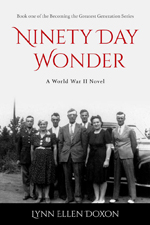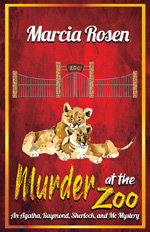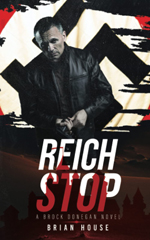David L. Harrison is a best-selling, award-winning author and poet who has also been a musician, a scientist, an editor, and a businessman. He is the former poet laureate of Drury University and the current poet laureate of Missouri (2023-2025). His 106 published books include poetry, fiction, and nonfiction for young readers and educational books for teachers. In 2022, he published This Life: An Autobiography (Ozarks Book Series) that “chronicles the fits and starts, professional rejections and redirections, the inevitable personal life conflicts and tragedies, as well as the breakthroughs and triumphs in a career that has spanned seven decades…and is still going.” You’ll find David on his website DavidLHarrison.com, his blog, and on Facebook. His autobiography is available through Missouri State University at Ozarks Book Series, but the rest of his books can be found on his Amazon Author Page.
 David, you’re an award-winning author. You even have a school named after you: The David Harrison Elementary School in Springfield, Missouri. And now, you’ve written This Life, An Autobiography. Please tell us why you wrote this book and why you choose this time in your life to write it.
David, you’re an award-winning author. You even have a school named after you: The David Harrison Elementary School in Springfield, Missouri. And now, you’ve written This Life, An Autobiography. Please tell us why you wrote this book and why you choose this time in your life to write it.
Thank you for offering me this chance to say hello to friends and colleagues in SouthWest Writers. I’m delighted to be a member of this group of talented writers.
I didn’t plan to write a memoir. I sat in a theater audience one night and was highly entertained by a gifted young musician who told about his journey from a child who was attracted to music to the professional musician he had become. I wondered if I should do something like that. I, too, had taken a long, sometimes difficult journey from the time I wrote my first poem to become a well-published author and poet. Forty pages into a play script, I knew that the effort was headed toward disaster. I don’t have a playwright’s instincts. But rather than throw out weeks of work, I decided to go forward with a book about my writer’s journey. Someone, I hoped, would like to know how one person managed to go about it. This Life, An Autobiography was the result.
Having successfully written so many books of poetry, fiction, and nonfiction for young readers, as well as educational books for teachers, is there a genre you haven’t tackled but are eager to try?
Now and then I wish I could write a series of stories, but my brain isn’t wired that way. I exhaust my supply of energy, originality, and patience for a given subject in a single effort. After that, my mind moves on to something else.
Were there any unexpected moments for you when writing This Life? Did you ever feel vulnerable revealing so much about yourself?
The first challenge was setting the boundaries of what I would include in the narrative of my life. Once I decided that this was to be an effort to trace my development as a writer, I passed on many memories that were important to me but which didn’t seem to touch on the main theme. Had I written the story of my life, instead of the story of how I became a writer, the vulnerability issue would have been more of a problem. In other words, I left out some of the good stuff. (:>
Tell us about your experience as Missouri’s Poet Laureate and what this experience means to you.
The Missouri Poet Laureate program, which began in 2006, features a new state poet laureate appointed by the governor every two years. I’d been nominated four times previously and this time I made it. I’m the first who identifies as a children’s poet to be chosen, so I’m delighted with the honor and the opportunity to meet people across our state. My first official appearance in my new role took place on September 8, 2023 in David Harrison Elementary School, which was named after me. Coming up are events in Kansas City at the Heartland Book Festival on October 6–7 and in St. Louis on April 6 to give a 2-hour poetry workshop for the St. Louis Writers Guild and general public. I expect to do a lot of traveling but will also take advantage of Zoom and other technology to reach as many as I can to read and write poetry and talk about how it enriches our lives.
I read that you started writing poetry at the age of six. Do you remember what inspired you to write your first poem and what it was about?
I wrote my first poem in a snit. We lived in Ajo, Arizona, a town not far from the Mexican border. My dad had come home from a fishing trip in Mexico and my mother was frying his catch on a skillet in the kitchen. That fish smelled SO good and I was SO hungry and I am sure I was SO much in her way. I found myself banished to the living room until she called me for dinner. I made up a poem to show how I felt.
Sometimes I wish
I had a fish
Upon a little dish.
How did you feel the first time you saw an illustrator’s interpretation of a story you created?
The first time you see how someone else imagined what you’ve imagined is a highlight in a writer’s life. For some reason, when I write about human characters, they don’t always materialize in my mind as whole people. They are symbols, personalities, metaphors. It takes an artist to be practical and say, “Come on, they have to look like something. How about like this?” I almost always love the surprise of meeting my characters face to face. I’m more at home with animals. I know what they look like!
After a six-decade writing career, is there anything you’d do differently if you started your writing and publishing journey today?
The easy answer is to say I would have avoided becoming a scientist, head of a block manufacturing company, and co-owner of a gift store specializing in crystals, porcelains, and china, and gone straight into writing, but I might not have wound up here. If I hadn’t touched those other bases along the way, I might have ended somewhere else, and, since I have few regrets about anything that happened down that rather crooked path, I think I’ll say I would walk it again.
Can you tell us about a time when you didn’t know if you would make it as an author and how you persevered?
The low point for me was toward the end of six long years of rejections. Only one guy — a professor at Drury who taught a writing course — had told me he thought I could become a writer. No one else had said that. Ever. To the contrary, editor after editor had told me by their actions that I was definitely not a writer. On one rejection letter, an editor had scribbled, “Are you kidding?” I came to feel like an utter failure. I was wasting my time. I was not a writer, was never going to be one. I simply didn’t have the talent for it. In This Life, I hesitated to describe those dismal years, filled with self-doubt and a growing sense of futility and failure. My decision to include the experience was based on two considerations: 1) it was the truth; it happened; it was part of my journey, and 2) I thought there might be other struggling writers out there who would understand what I went through and take heart.
With such a varied writing background, who are your favorite authors and how have they influenced your writing?
Among my favorites are Annie Proulx, Barbara Kingsolver, Joan Didion, John Irving, E. B. White, and Kurt Vonnegut. They’re all masters of knowing what they’re talking about before they start talking, and when they do begin, their voices are so distinctive that they hold our attention from beginning to end. My favorite authors of literature for young people are too numerous to mention here but my choices all have one thing in common. They use words like a palette of endless colors and they paint images with them that remain with us long after the printed story or poem or narrative ends. They bring literature to life. I try not to compare my developing manuscript to the so-so writers in the world. I hold my work up to the very best, sigh, and try harder to come closer.
Can you give us an update on when This Life: An Autobiography will be available more widely online?
Although the book is available through the Missouri State University site in Springfield at OzarksStudies.MissouriState.edu, ongoing efforts to connect with a major distributor for wider distribution through Amazon and other traditional outlets look promising. By the time you read this, terms may have been agreed on and become operational by the end of the year.
 Su Lierz writes dark fiction, short story fiction, and personal essays. Her short story “Twelve Days in April,” written under the pen name Laney Payne, appeared in the 2018 SouthWest Writers Sage Anthology. Su was a finalist in the 2017 and 2018 Albuquerque Museum Authors Festival Writing Contest. She lives in Corrales, New Mexico, with her husband Dennis.
Su Lierz writes dark fiction, short story fiction, and personal essays. Her short story “Twelve Days in April,” written under the pen name Laney Payne, appeared in the 2018 SouthWest Writers Sage Anthology. Su was a finalist in the 2017 and 2018 Albuquerque Museum Authors Festival Writing Contest. She lives in Corrales, New Mexico, with her husband Dennis.













